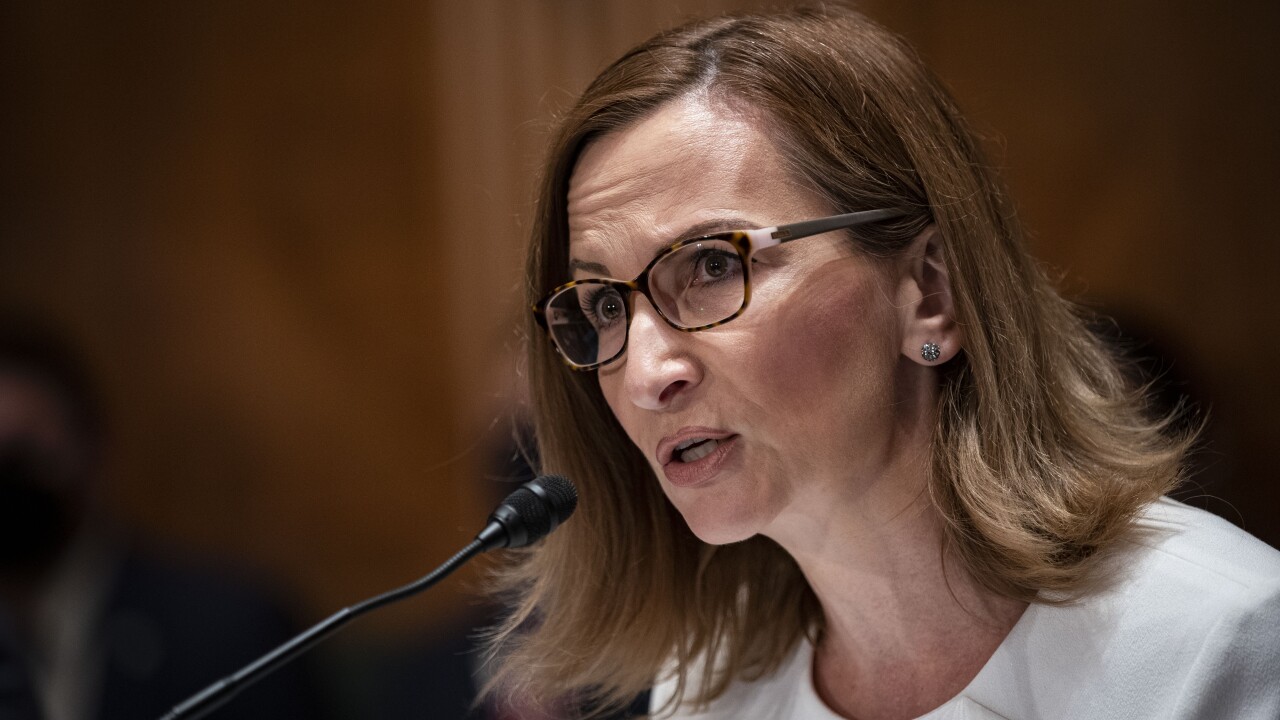Over the past few months, as Green Dot’s chief executive Steve Streit met with all of his company’s major retailer partners, one thing became certain: Most of those stores could start putting competing products on their shelves.
So to be up front, the Monrovia, Calif.-based prepaid card company announced July 26 it is lowering its yearend revenue forecast by about 9%, to a range of $534 million to $543 million, and is reducing its earnings-per-share projections from a range of $1.65 to $1.70 to a range of $1.29 to $1.32.
“The industry is evolving. We have effectively been alone in terms of retail, and now that we believe that won’t be the case we wanted to … reforecast,” Streit said in an interview July 27. “We would rather have an investor sell a share because of what they know rather than not sell a share based on what they do not know. We always want to be up front.”
Many investors took the updated guidance as a warning and ran for the exits. By midday Friday, Green Dot’s shares were down a staggering 60% from the previous day’s closing price, to $9.22.
Investors also were clearly spooked by Green Dot’s second-quarter results. Though revenues were up 17% year over year, net income available to shareholders fell 17%, to just less than $10 million. Its earnings per share of 28 cents missed consensus analysts’ estimates by 13 cents, according to Thomson Reuters.
Wedbush analyst Gil B. Luria lowered his rating of the company to neutral from outperform after the July 26 earnings call.
“The big problem Green Dot has is that their retail partners that were previously exclusive are now putting other cards on the shelf,” he says. “I would say they need to find new channels to make up for the lost shelf space in their existing retail channel.”
To combat those diminishing returns, Green Dot on July 26 announced a series of new initiatives in advance of its earnings, including a new partnership with Russell Simmons’ prepaid card company, UniRush, under which Green Dot will bring UniRush’s RushCard into retail stores.
The company is also partnering with a company that provides financial services to colleges to potentially issue cards and provide bank accounts for student loan refund disbursement. And Green Dot is planning a commercial bank account attached to a debit card that will launch sometime in the next year. It launched its own
The company said it has already begun the first phase of beta testing for a new “mobile-centric” checking account. Green Dot says those accounts will most likely be rolled out before the end of the year.
At the same time, to hedge against fraud, the company is implementing a new risk-management system that will stop crooks from misusing its prepaid cards. That measure could also prevent some of Green Dot’s new customers from activating its cards.
Still, the crux of Green Dot’s business model has been its exclusive relationships with retailers, and during the earnings call, Streit said that is still, partly, the case.
“We're talking about things that might happen in the future, but here's the challenge that we face as an organization that needs to respond to the conditions,” said Streit. “If you have large companies offering millions of millions of dollars to get on the rack with a product, I have a couple of choices. I can keep paying higher fees, we can keep trying to someway artificially block that, or we can say: ‘Look, let's do the research on the product, let's see what our sell through would be, let's see what the optimum pricing is, and then compete in the marketplace and let that settle out and move onto the next thing.”
Aite Group senior analyst Madeline K. Aufseeser noted in an email some key differences between Green Dot’s business model and that of rival NetSpend.
For example, more than 60% of Green Dot's cards are sold through Wal-Mart under the MoneyCard label, and an additional 11% are sold through Walgreens, she said, noting NetSpend’s products are sold through a wider array of merchants and in more locations.
Moreover, the Wal-Mart portion of the Green Dot business is a lower-margin business because interchange revenues are at lower rates beause the cards are issued through GE Money, which is subject to the Fed's debit-rate cuts under the Durbin amendment. NetSpend cards primarily are issued through MetaBank,which is not subject to the same regulation because Meta has less than$10 billion in assets.
The number of Green Dot cards activated during the quarter totaled 1.98 million, up 8.8% from 1.82 million a year earlier. The number of active cards at the end of the quarter rose 8.3%, to 4.44 million from 4.1 million. Gross dollar volume was $3.98 billion, up 9.6% from $3.63 billion, while purchase volume rose 15.3%, to $2.94 billion from $2.55 billion.





